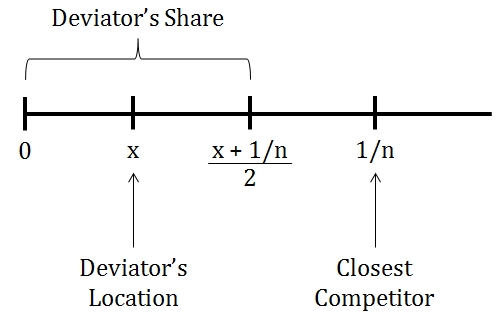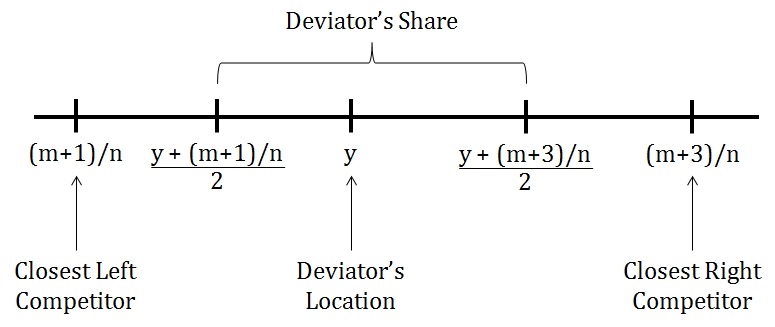Imagine you are playing Jenga, and it is your turn. The tower looks like this:

To save you some time, almost the entire tower is “spent”—either the middle block or the two side blocks are missing from just about every level. The only exceptions are the top two rows. Jenga’s rules only allow you to take blocks from below a completed row, so the top is off limits. Without doing some ridiculous Jenga acrobatics, this gives you exactly three blocks to choose from, all of them in the second row from the top.
If you have played Jenga before, you know what normally comes next. Jenga blocks are not completely uniform; some are slightly smaller or slightly larger than others. Consequently, the tower’s weight is not usually distributed evenly across a row. If the middle block is slightly larger, then the sides will be loose due to this; if the middle block is slightly smaller, then it alone will be loose.
Under normal circumstances, you should poke around that row to figure out which is the case. If the sides are loose, you would take one of them; if the middle was loose, then you would take it.
Backward induction suggests caution here. Broadly, backward induction tells us that the best way to strategize for right now is to consider how others will respond to whatever you can do. After doing so, choose the option that maximizes your benefits given how others will maximize their benefits later. In short, the future matters; if you ignore it, trouble will find you.
Let’s say that the middle block is loose. What happens if you take it? Your opponent is in deep trouble. There are no blocks that can be removed in isolation without crumbling the tower. Instead, your opponent must take a row with the middle block missing, slowly re-position a side block into the middle slot, and then remove the other block. This is ridiculously difficult. Your opponent is almost certain to lose here, so your initial decision is straightforward.
Life is more complicated if the side blocks are loose. Suppose you take one of them. Your opponent will immediately follow up by taking the remaining side block. When the game comes back to you, the new top row will still only have two blocks on it. This means you will be forced to do the aforementioned nearly impossible task. You will almost certainly lose.
Your only other feasible option is to force out the middle block. This is a tall order—it is not loose precisely because it is supporting the weight above it. You are definitely more likely to lose this turn if you try taking it. However, if you are successful, you will place your opponent in the near-hopeless situation and almost certainly win.
Thus, depending on how you perceive those probabilities, your optimal play may be taking the more difficult block!
What we are observing here is a special case of a more general principle in zero-sum games. There are two paths to victory in such interactions: you winning and your opponent losing. Thus, you should not exclusively focus on what puts you in a good position; you need to pay equal attention to what puts your opponent in a bad position. This is why you should not try to maximize your score in Words with Friends or Scrabble. It also helps explain why trades in Monopoly or Catan don’t work with only two players.



